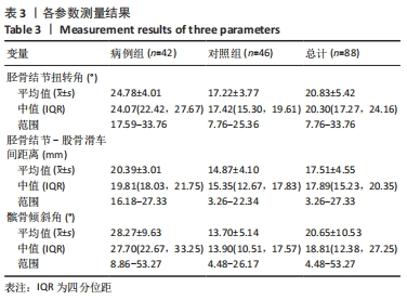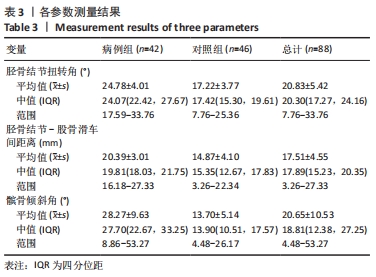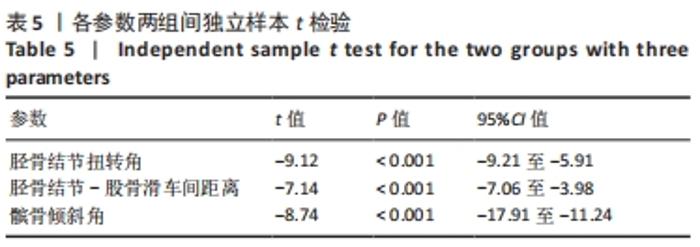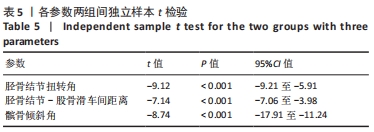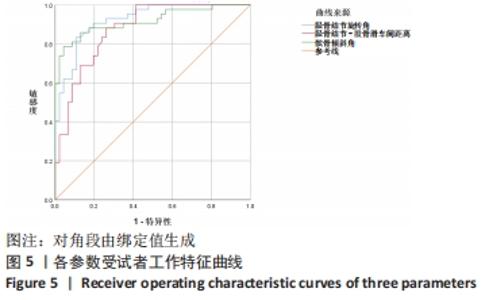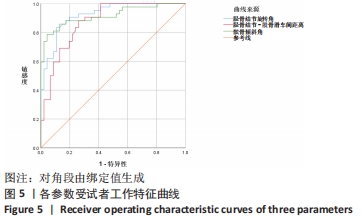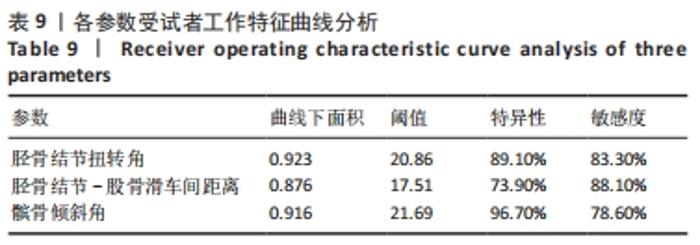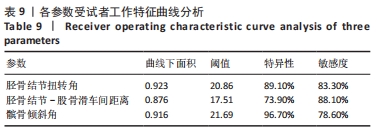[1] SANDERS TL, PAREEK A, HEWETT TE, et al. Incidence of First-Time Lateral Patellar Dislocation: A 21-Year Population-Based Study. Sports Health. 2018;10(2):146-151.
[2] JAQUITH BP, PARIKH SN. Predictors of Recurrent Patellar Instability in Children and Adolescents After First-time Dislocation. J Pediatr Orthop. 2017;37(7):484-490.
[3] GRIMM NL, LEVY BJ, JIMENEZ AE, et al. Traumatic Patellar Dislocations in Childhood and Adolescents. Orthop Clin North Am. 2020;51(4):481-491.
[4] MACDONALD J, RODENBERG R, SWEENEY E. Acute Knee Injuries in Children and Adolescents: A Review. JAMA Pediatr. 2021;175(6):624-630.
[5] ZIMMERER A, SOBAU C, BALCAREK P. Recent developments in evaluation and treatment of lateral patellar instability. J Exp Orthop. 2018;5(1):3.
[6] JIBRI Z, JAMIESON P, RAKHRA KS, et al. Patellar maltracking: an update on the diagnosis and treatment strategies. Insights Imaging. 2019; 10(1):65.
[7] PINHEIRO JUNIOR LFB, CENNI MHF, NICOLAI OP, et al. Outcomes of medial patellofemoral ligament reconstruction in patients with patella alta. Revista Bras Ortop. 2018;53(5):570-574.
[8] YANKE AB, HUDDLESTON HP, CAMPBELL K, et al. Effect of Patella Alta on the Native Anatomometricity of the Medial Patellofemoral Complex: A Cadaveric Study. Am J Sports Med. 2020;48(6):1398-1405.
[9] WOLFE S, VARACALLO M, THOMAS JD, et al. Patellar Instability. In: StatPearls. Treasure Island (FL): StatPearls Publishing; July 20, 2021. Patel DV, Castrodad IMD, Kurowicki J, et al. Patellofemoral Instability. 2021.
[10] MAAS KJ, WARNCKE ML, LEIDERER M, et al. Diagnostic Imaging of Patellofemoral Instability. RoFo. 2021;193(9):1019-1033.
[11] HUNTINGTON LS, WEBSTER KE, DEVITT BM, et al. Factors Associated With an Increased Risk of Recurrence After a First-Time Patellar Dislocation: A Systematic Review and Meta-analysis. Am J Sports Med. 2020;48(10):2552-2562.
[12] ZHENG X, HU Y, XIE P, et al. Surgical medial patellofemoral ligament reconstruction versus non-surgical treatment of acute primary patellar dislocation: a prospective controlled trial. Int Orthop. 2019;43(6): 1495-1501.
[13] SAPPEY-MARINIER E, SONNERY-COTTET B, O’LOUGHLIN P, et al. Clinical Outcomes and Predictive Factors for Failure With Isolated MPFL Reconstruction for Recurrent Patellar Instability: A Series of 211 Reconstructions With a Minimum Follow-up of 3 Years. Am J Sports Med. 2019;47(6):1323-1330.
[14] PETER G, HOSER C, RUNER A, et al. Medial patellofemoral ligament (MPFL) reconstruction using quadriceps tendon autograft provides good clinical, functional and patient-reported outcome measurements (PROM): a 2-year prospective study. Knee surgery, sports traumatology, arthroscopy : official journal of the ESSKA. 2019;27(8):2426-2432.
[15] DEJOUR H, WALCH G, NOVE-JOSSERAND L, et al. Factors of patellar instability: an anatomic radiographic study. Knee Surg Sports Traumatol Aarthrosc. 1994;2(1):19-26.
[16] FRANCIOZI CE, AMBRA LF, ALBERTONI LJB, et al. Anteromedial Tibial Tubercle Osteotomy Improves Results of Medial Patellofemoral Ligament Reconstruction for Recurrent Patellar Instability in Patients With Tibial Tuberosity-Trochlear Groove Distance of 17 to 20 mm. Arthroscopy. 2019;35(2):566-574.
[17] CHASSAING V, ZEITOUN JM, CAMARA M, et al. Tibial tubercle torsion, a new factor of patellar instability. Orthop Traumatol Surg Res. 2017; 103(8):1173-1178.
[18] CHASSAING V, VENDEUVRE T, BLIN JL, et al. How tibial tubercle torsion impacts patellar stability: A biomechanics study. Orthop Traumatol Surg Res. 2020;106(3):495-501.
[19] GOUTALLIER D, BERNAGEAU J, LECUDONNEC B. The measurement of the tibial tuberosity. Patella groove distanced technique and results (author’s transl). Rev Chir Orthop Reparatrice Appar Mot. 1978;64(5): 423-428.
[20] HUSSEIN A, SALLAM AA, IMAM MA, et al. Surgical treatment of medial patellofemoral ligament injuries achieves better outcomes than conservative management in patients with primary patellar dislocation: a meta-analysis. 2017;3(2):jisakos-2017-000152.
[21] SACCOMANNO MF, SIRCANA G, FODALE M, et al. Surgical versus conservative treatment of primary patellar dislocation. A systematic review and meta-analysis. Int Orthop. 2016;40(11):2277-2287.
[22] CHRISTENSEN TC, SANDERS TL, PAREEK A, et al. Risk Factors and Time to Recurrent Ipsilateral and Contralateral Patellar Dislocations. Am J Sports Med. 2017;45(9):2105-2110.
[23] SALONEN EE, MAGGA T, SILLANPää PJ, et al. Traumatic Patellar Dislocation and Cartilage Injury: A Follow-up Study of Long-Term Cartilage Deterioration. Am J Sports Med. 2017;45(6):1376-1382.
[24] FRINGS J, KRAUSE M, WOHLMUTH P, et al. Influence of patient-related factors on clinical outcome of tibial tubercle transfer combined with medial patellofemoral ligament reconstruction. Knee. 2018;25(6): 1157-1164.
[25] ALLEN MM, KRYCH AJ, JOHNSON NR, et al. Combined Tibial Tubercle Osteotomy and Medial Patellofemoral Ligament Reconstruction for Recurrent Lateral Patellar Instability in Patients With Multiple Anatomic Risk Factors. Arthroscopy. 2018;34(8):2420-2426.e2423.
[26] HOCHREITER B, HIRSCHMANN MT, AMSLER F, et al. Highly variable tibial tubercle-trochlear groove distance (TT-TG) in osteoarthritic knees should be considered when performing TKA. Knee Surg Sports Traumatol Arthrosc. 2019;27(5):1403-1409.
[27] MOYA-ANGELER J, VAIRO GL, BADER DA, et al. The TT-TG Distance/Trochlear Dysplasia Index Quotient Is the Most Accurate Indicator for Determining Patellofemoral Instability Risk. Arthroscopy. 2021;S0749-8063(21)00770-2.
[28] SU P, JIAN N, MAO B, et al. Defining the role of TT-TG and TT-PCL in the diagnosis of lateralization of the Tibial tubercle in recurrent patellar dislocation. BMC musculoskeletal disorders. 2021;22(1):52.
[29] DICKENS AJ, MORRELL NT, DOERING A, et al. Tibial tubercle-trochlear groove distance: defining normal in a pediatric population. J Bone Joint Surg Am. 2014;96(4):318-324.
[30] STEENSEN RN, BENTLEY JC, TRINH TQ, et al. The prevalence and combined prevalences of anatomic factors associated with recurrent patellar dislocation: a magnetic resonance imaging study. Am J Sports Med. 2015;43(4):921-927.
[31] BALCAREK P, JUNG K, FROSCH KH, et al. Value of the tibial tuberosity-trochlear groove distance in patellar instability in the young athlete. Am J Sports Med. 2011;39(8):1756-1761.
[32] SU P, HU H, LI S, et al. (TT-TG)/TW Is the Optimal Indicator for Diagnosing a Lateralized Tibial Tubercle in Recurrent Patellar Dislocation Requiring Surgical Stabilization. Arthroscopy. 2021:S0749-8063(21)01049-5.
[33] PAIVA M, BLØND L, HÖLMICH P, et al. Effect of Medialization of the Trochlear Groove and Lateralization of the Tibial Tubercle on TT-TG Distance: A Cross-sectional Study of Dysplastic and Nondysplastic Knees. Am J Sports Med. 2021;49(4):970-974.
[34] HESS S, FROMM T, SCHIAPPARELLI F, et al. Change of tibial tuberosity-trochlear groove (TT-TG) distance during total knee arthroplasty had no influence on clinical outcome and anterior knee pain. Int Orthop. 2021;45(12):3069-3074.
[35] HINGELBAUM S, BEST R, HUTH J, et al. The TT-TG Index: a new knee size adjusted measure method to determine the TT-TG distance. Knee Surg Sports Traumatol Arthrosc. 2014;22(10):2388-2395.
[36] EDWARDS A, LARSON E, BECKERT M, et al. TT-TG vs. modified lateral patellar edge for determination of tibial tubercle transfer distance in Fulkerson osteotomy procedures. Knee. 2016;23(4):712-715.
|




